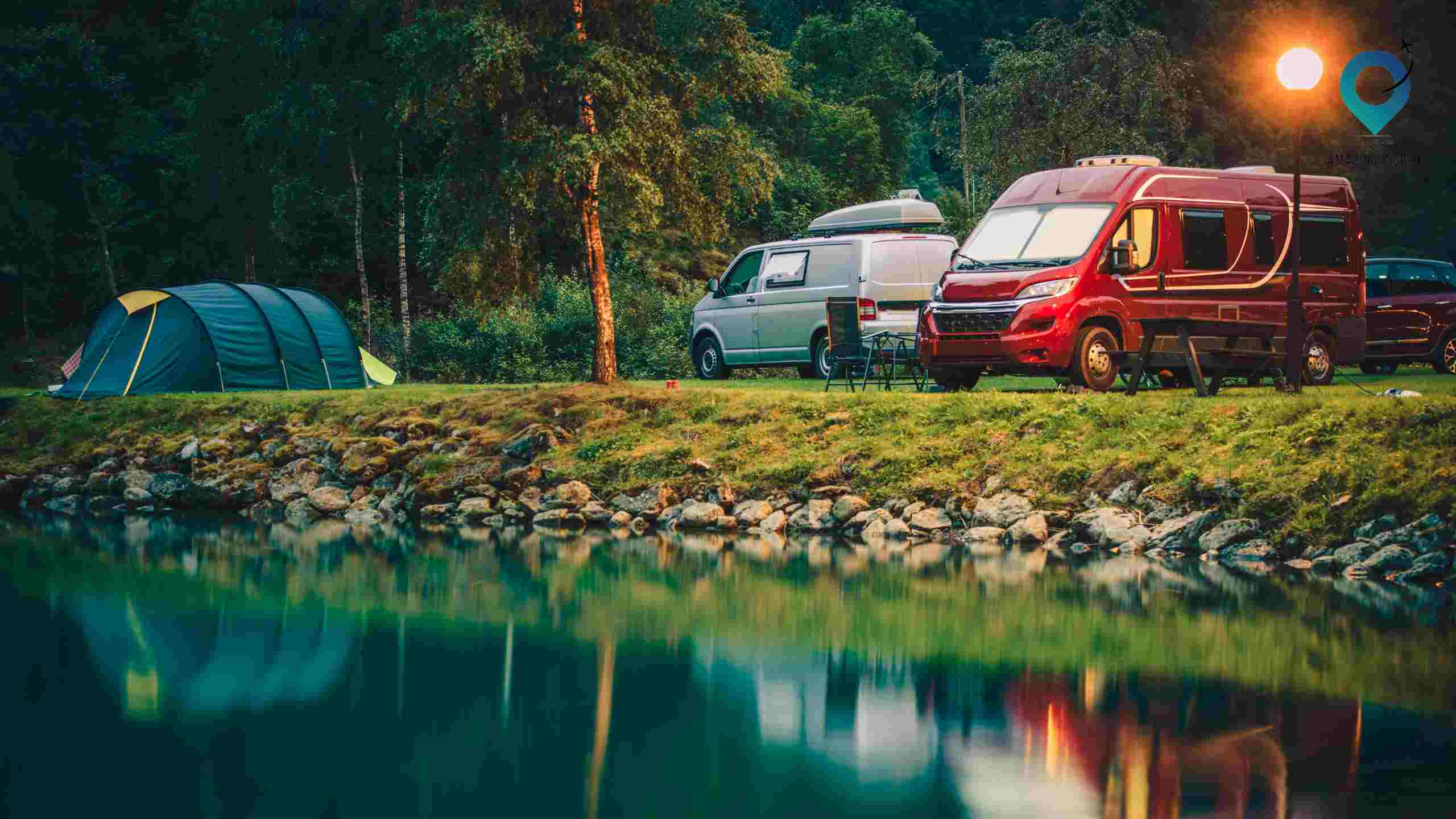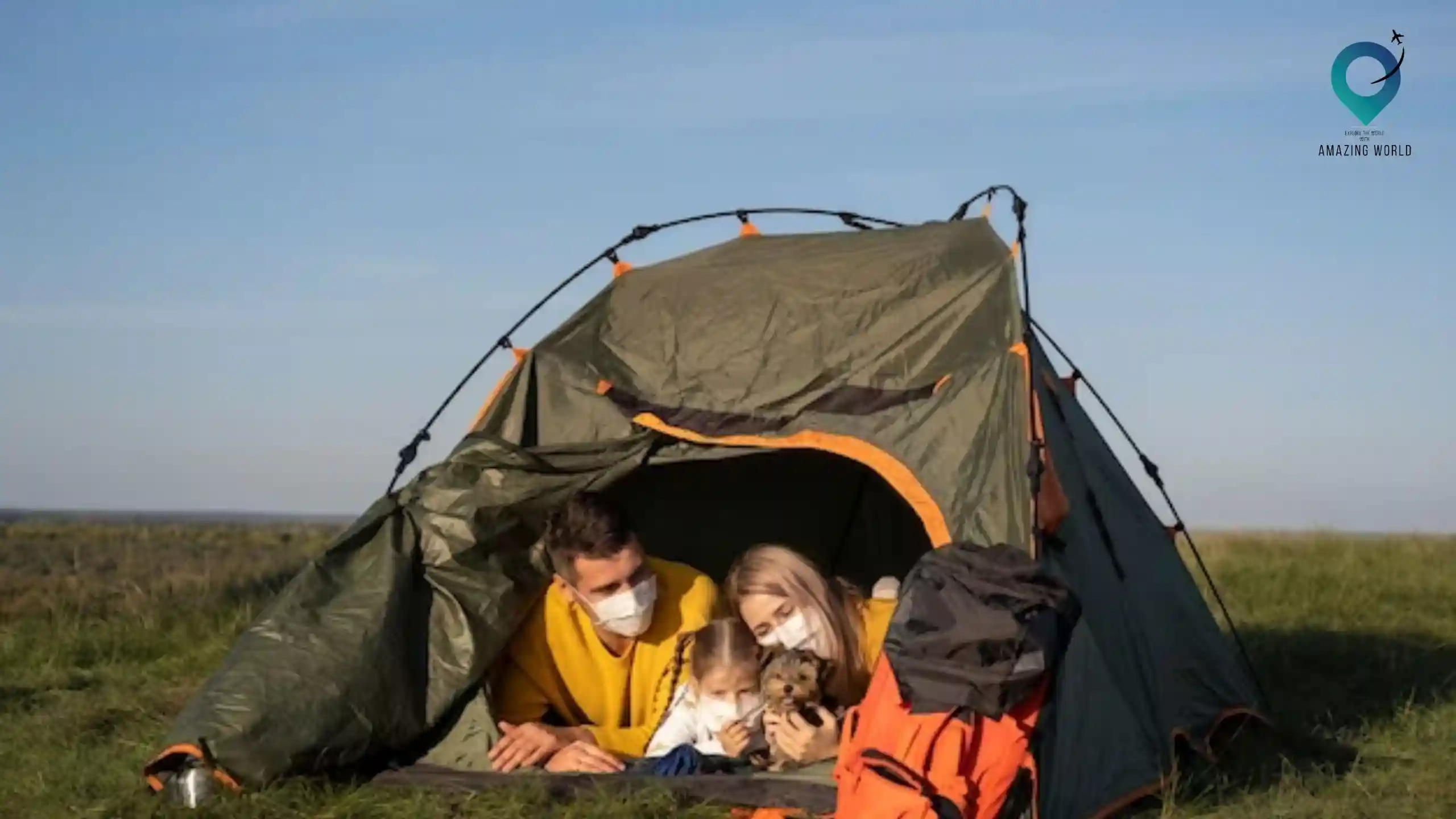Dispersed Camping Guide: Your Ultimate Escape to Free Camping in the US
Table of Contents
Toggle
At Amazing World, we’re passionate about helping you experience the beauty of nature without breaking the bank. Imagine embarking on a road trip that leads you to picturesque landscapes, under a blanket of stars, with the wind whispering through the trees – all without the hefty campground fees. It’s not a dream; it’s the magic of dispersed camping. In this comprehensive guide, we’ll walk you through what dispersed camping is, its benefits, how to find the perfect sites, and the essential tips for a successful adventure.
What is Dispersed Camping?
Dispersed camping, also known as free camping, boondocking, or roughing it, is a type of outdoor camping experience that involves setting up your camp outside of designated campground areas on public lands, such as National Forests, Bureau of Land Management (BLM) areas, and other federally owned land. Unlike traditional campgrounds, where amenities like toilets, showers, and designated campsites are provided, dispersed camping offers a more minimalist and back-to-basics approach to camping.
Here’s a breakdown of what dispersed camping entails:
Location: Dispersed camping takes place in areas that are not developed or designated as formal campgrounds. It allows you to camp in more remote and natural settings, often away from the crowds and closer to nature.
Autonomy: One of the key features of dispersed camping is the freedom it offers. You have the autonomy to choose your own camping spot within the guidelines of the public land you’re on. This means you can select a spot that suits your preferences, whether it’s by a lake, in a forest, or on a mountainside.
Minimal Amenities: Dispersed camping sites typically lack amenities commonly found in established campgrounds, such as restrooms, running water, picnic tables, and fire pits. This type of camping is suitable for those who are comfortable with a more self-reliant and self-sufficient camping experience.
Environmental Impact: Dispersed camping encourages responsible camping practices to minimize impact on the environment. Campers are expected to follow Leave No Trace principles, which emphasize packing out all waste, minimizing campfire impact, and respecting wildlife and vegetation.
Access: Dispersed camping is often accessible by vehicles, allowing you to camp near your car or RV. This distinguishes it from primitive camping, where you may need to hike or use non-motorized transportation to access your campsite.
Regulations: While dispersed camping offers more freedom, it’s important to be aware of the regulations and guidelines of the specific public land you’re camping on. Different areas may have varying rules regarding camping duration, campfire restrictions, and camping distance from water sources and roads.
Scenic Experience: Dispersed camping provides an opportunity to immerse yourself in the beauty of natural landscapes without the distractions of developed campgrounds. You can enjoy solitude, breathtaking views, and a deeper connection with nature.
Overall, dispersed camping offers a unique and authentic camping experience for those who are seeking a closer connection to the outdoors and are willing to forgo some modern comforts in exchange for the beauty and tranquillity of natural landscapes. It’s essential to research the specific regulations and guidelines for the area you plan to camp in and to practice responsible camping to preserve the environment for future generations.
The Allure of Dispersed Camping
Unlike conventional pay campsites that come with amenities like toilets and showers, dispersed campsites offer a back-to-basics experience. It’s a chance to trade the conveniences for solitude, breathtaking scenery, and an authentic connection with nature. Picture yourself gazing up at a canopy of stars, listening to the soothing sounds of the wind and the forest – this is the allure of dispersed camping.
Primitive Camping vs. Dispersed Camping
| Aspect | Primitive Camping | Dispersed Camping |
| Location | Remote and undeveloped areas, often backcountry | Public lands (e.g., National Forests, BLM areas) |
| Access | May require hiking or non-motorized transportation | Often accessible by vehicles |
| Amenities | Minimal to no amenities (no toilets, running water) | Minimal amenities (no facilities, basic amenities) |
| Campsite Setup | May need to find a suitable spot for tents | May require more effort to reach the campsite |
| Self-Reliance | More self-reliant due to lack of amenities | Self-reliant while enjoying some conveniences |
| Regulations | Varies; may have specific rules based on location | Must adhere to regulations of specific public land |
| Impact on Environment | Focus on Leave No Trace principles | Focus on Leave No Trace principles |
| Connection to Nature | Offers a deep connection to natural landscapes | Provides a connection to natural beauty |
| Vehicle Camping | Less common due to remote locations | Often involves camping by vehicle or RV |
| Accessibility | May require more effort to reach campsite | Easier access to camping locations |
| Comfort | Less comfortable due to lack of amenities | Moderate comfort level with some self-sufficiency |
The Cost of Freedom: Is Dispersed Camping Free?
Absolutely! Dispersed camping doesn’t require reservations or fees. It’s all about finding a suitable spot and setting up camp. The appeal lies in the freedom to choose your own slice of paradise. Whether you’re yearning for a lakeside retreat, a mountain hideaway, or a secluded forest nook, dispersed camping grants you the autonomy to decide.
Navigating the Legality: How to Know Where to Camp
Navigating the legality of dispersed camping is essential to ensure you’re abiding by regulations. By consulting a Forest Service map specific to your desired state, you can identify areas designated as National Forest or Bureau of Land Management land. These areas often permit free car camping. The United States boasts a wealth of federally owned land, making up a substantial portion of the country, particularly in the West.
Always keep an eye out for posted signage, such as “no overnight parking” or “day use only.” To make well-informed decisions, consult a ranger upon arrival to confirm which areas are suitable for camping.
Where Can You Camp?

The beauty of dispersed camping lies in its versatility. You’re free to sleep in your vehicle within ANY federally designated lands.
National Forests: These are vast areas of public land managed by the U.S. Forest Service. National Forests offer a wide range of ecosystems, landscapes, and recreational opportunities. Dispersed camping is generally allowed throughout National Forests, but it’s essential to adhere to specific regulations and guidelines that might vary from one forest to another.
Bureau of Land Management (BLM) Areas: BLM manages vast stretches of public land, particularly in the western United States. Many BLM lands are open to dispersed camping. These areas often provide a diverse range of landscapes, from deserts to mountains. As with National Forests, it’s crucial to be aware of local regulations and rules.
Wildlife Management Areas (WMA): These areas are designated to conserve and manage wildlife and their habitats. Some WMAs allow dispersed camping, providing unique opportunities to connect with nature and observe wildlife in their natural habitats.
National Grasslands: Managed by the U.S. Forest Service or the BLM, National Grasslands offer open spaces characterized by grassy landscapes. These areas may provide dispersed camping opportunities, but it’s advisable to research specific regulations.
County Parks and City Parks: In some cases, county and city parks may allow dispersed camping. However, it’s important to check for signs, inquire with local authorities, and ensure you’re following any posted regulations.
Trailheads: Some trailheads, particularly those in federally designated lands, might permit dispersed camping. These areas are usually accessible and can serve as a starting point for outdoor adventures.
Online Resources and Apps: Utilizing online resources and apps can help you discover dispersed camping sites in various locations. Websites and apps like The DyrtPRO, Sēkr, boondocking.org, Campendium.com, freecampsites.net, and iOverlander can provide information on potential camping spots.
Unconventional Options: In some situations, campers opt for unconventional options like Walmart parking lots, truck stops, or rest areas for convenient overnight stays. While these options might not offer the same natural beauty as wilderness areas, they can be practical for travelers seeking a safe place to spend the night.
It’s important to note that while dispersed camping offers freedom and flexibility, it also comes with increased responsibilities. Always prioritize Leave No Trace principles, adhere to local regulations, and respect the environment. Before embarking on a dispersed camping trip, research the specific regulations and guidelines for the area you plan to visit to ensure a safe and enjoyable experience.
Discovering Your Perfect Spot: Tips for Finding Dispersed Camping Sites
- Ask a Ranger: Seek insider knowledge by approaching a BLM Ranger Station or visitor center. Rangers are local experts who can offer invaluable suggestions and directions. They can provide information about suitable camping areas, current conditions, and any regulations or restrictions in the area.
- Scour Google Maps: Use Google Maps to identify green areas signifying public lands. This can help you get a general idea of where you might find dispersed camping opportunities. Google Earth can also be helpful for familiarizing yourself with the terrain and road networks in the area.
- Consider Accessibility: When choosing a dispersed camping spot, opt for paved or well-packed gravel tracks if possible. Good accessibility is essential for a comfortable and safe camping experience. Avoid roads that are too rough or challenging for your vehicle.
- Prioritize Existing Sites: Choose campsites that have been used before. Look for signs of established fire rings, clear areas for tents or RVs, and evidence of previous camping. By using existing sites, you can minimize your impact on the environment.
These tips can help you locate suitable dispersed camping sites and enhance your overall camping experience. Keep in mind that while dispersed camping offers a more flexible approach to camping, it’s important to be respectful of the environment, adhere to regulations, and leave no trace of your presence when you depart.
Unveiling Hidden Gems: Online Resources and Apps for Finding Camping Spots
Numerous online resources and apps can lead you to hidden camping gems. These platforms make finding your next adventure a breeze:
- The DyrtPRO: The DyrtPRO is a camping website and app that offers a comprehensive database of campgrounds and camping sites across the United States. It provides user-generated reviews, photos, and detailed information about different camping areas, including dispersed camping spots. The app offers both free and paid versions, with the paid version unlocking additional features.
- Sēkr: Sēkr is an app designed to help outdoor enthusiasts find and share unique camping and adventure spots. It’s a platform for discovering off-the-beaten-path locations that may not be as well-known. Users can contribute their own favorite spots and share them with the community.
- boondocking.org: Boondocking.org focuses on providing information about boondocking sites, which are often remote and free camping locations away from developed campgrounds. The platform allows users to search for boondocking sites based on location and features.
- Campendium.com: Campendium is a website and app that offers reviews, photos, and information about various camping sites, including dispersed camping areas. It covers a wide range of camping options, from established campgrounds to more remote spots.
- iOverlander: While initially designed for overland travelers, iOverlander has become a popular resource for all types of travelers seeking camping spots, including dispersed camping sites. It includes user-generated information about camping areas, along with details about amenities and accessibility.
These online resources and apps can be extremely helpful in planning your dispersed camping trips. They often include user-generated reviews, ratings, photos, and GPS coordinates, making it easier for you to locate and assess potential camping spots. However, always remember to cross-reference information, as conditions can change, and not all spots may be suitable for your specific needs or preferences. Additionally, be respectful of the environment and adhere to any regulations or guidelines in place for each location you visit.
The Road Less Travelled: Rules and Responsibilities of Dispersed Camping
While dispersed camping offers incredible freedom, it comes with increased responsibilities. Here’s what you need to know:
Local Regulations: Contact the local Forest Service office to be aware of any restrictions or fire regulations. Knowledge is power in ensuring a safe experience.
Leave No Trace: This golden rule applies more than ever in dispersed camping. Pack out everything you bring in, and properly dispose of waste according to Leave No Trace principles.
Toilet Etiquette: When nature calls, follow proper etiquette by digging a hole at least 100 feet away from water sources to dispose of waste. Remember, using toilet paper can negatively impact the environment.
Stay Within Limits: Respect the rules by camping within a one-mile perimeter away from campgrounds and 100 feet from any stream. Avoid sleeping on the side of the road and maintain a comfortable distance from roadways.
Water Preparation: Bring ample water or a water treatment method. Don’t assume that natural water sources are safe to drink without treatment.
Be Prepared: Equip yourself with maps, GPS, and weather forecasts. Always prioritize safety and ensure you’re prepared for any situation.
Conclusion.
Dispersed camping offers an escape from the ordinary, allowing you to embark on an adventure that combines the joys of exploration, self-reliance, and a deep connection with the natural world. By adhering to responsible camping practices and respecting the guidelines of the public lands you visit, you can enjoy the tranquillity and beauty of nature while leaving behind only footprints and memories.
So, whether you’re yearning for a lakeside retreat, a mountain hideaway, or a secluded forest nook, dispersed camping invites you to embark on your ultimate escape to free camping in the US.
How much did you like Our detailed Dispersed Camping Guide: Your Ultimate Escape to Free Camping in the US? Review Also, please share these Blogs with your friends on social media.
Related Article –

Meet David Hoper, a passionate travel Blog writer with 7+ years of experience in travel content. Through his exemplary storytelling and engaging narratives, he shares his experiences and brings destinations to life. With a keen eye for detail and a love for exploration, he has cultivated a diverse portfolio of travel blogs that inspire and inform readers worldwide.








